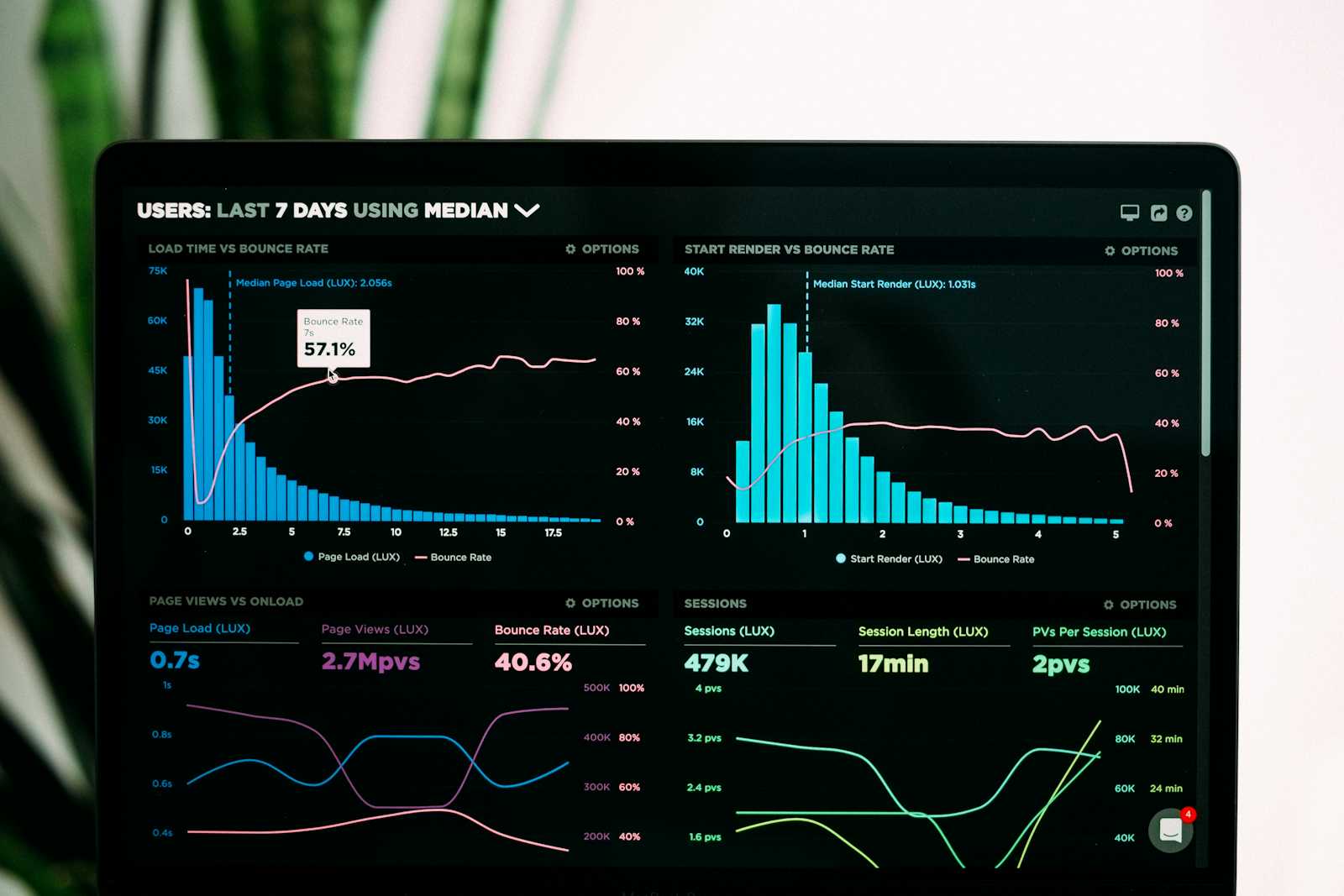Data Visualization Guide to Seaborn
 Welemele-John Chize
Welemele-John ChizeTable of contents

In recent years Data visualization in Seaborn has gained a lot of traction mainly due to its functions and storytelling capacity. It's a powerful tool that turns data into digestible formats by leveraging visual representations into actionable insights to facilitate decision-making processes.
PREREQUISITE
To properly understand this article the reader must have a basic understanding of Python, data interpretation, data analysis, and data visualization
TABLE OF CONTENT
Introduction to Seaborn.
Installing Seaborn and importing necessary libraries.
Examples of Seaborn and their relationship
Advantages of using Seaborn
Disadvantages of using Seaborn
Tips for Effective Visualization
Introduction to Seaborn
Seaborn, which is a Python-based visualization library built on Matplotlib and integrates with the Pandas data structure. It provides a high-level interface for the creation and beautification of visuals, mostly complex data sets while providing a wide spectrum of plot types to visualize different aspects of data by its additional functionality for statistical estimation, time series visualization, color palettes, and more.
Installing Seaborn and importing necessary libraries
Installation
1. It's advised that before installing Seaborn you should create a working Python environment.
You can achieve this by visiting (https://www.python.org), downloading the latest version for your operating system, and verifying the Python installation.
python --version
2. Now activate the Python environment.
• For Windows
env\Scripts\activate
• For MacOS\Linux: source
env\bin\activate
3. Once you have confirmed that the environment is Python-friendly, you can install Seaborn by using pip in the command prompt or terminal.
pip install seaborn
This command would install Seaborn along with its dependencies.
4. Once the installation is complete you can verify by running the following Python code.
python -c "import seaborn as sns; print(sns.__version__)"
If Seaborn is installed properly you should see the version number
Importation
After the verification of Seaborn, you can now import the Seaborn library and use its functions and features for data visualization.
At the beginning of the Python script, you can import Seaborn using
import seaborn as sns
During Seaborn importation, you can now create patterns, plots, color palettes, etc.
Then we use the # Load example dataset to indicate a built-in dataset provided by Seaborn. These sets could be "tips," "Irish," "Titanic," or "flight" and are used for illustrations of various plotting techniques.
This can be shown as:
Import seaborn as sns
Load example dataset.
iris = sns.load_dataset("iris")
Exploring the dataset and examples of Seaborn
Datasets
As briefly explained earlier, Seaborn has a couple of built-in datasets. More examples could be "Fmri," "planets," "gamma," "dots," etc.
Each dataset has its unique function and implementation here are some examples
• tips
This is information given by the customer which could be tip amount, total bill amount, and other variables.
import seaborn as sns
import matplotlib.pyplot as plt
Load example dataset.
tips = sns.load_dataset("tips")
• planets
This dataset gives information about planets discovered within our solar system, which includes masses, detection method, and their orbital period.
import seaborn as sns
import matplotlib.pyplot as plt
Load example dataset.
tips = sns.load_dataset("planets")
• gamma
These datasets give information on gamma-ray burst peak flux and it's used in studying astronomical events
import seaborn as sns
import matplotlib.pyplot as plt
Load example dataset.
tips = sns.load_dataset("gamma")
Now, we can understand how datasets are used in Seaborn its features, and the role it plays.
Examples of Seaborn and their relationship
We've talked extensively about how Seaborn is installed and the various datasets now we shall be looking at a few examples to help you understand how Seaborn can be implemented
• Scatter plot
This is occasionally used to show the relationship between 2 variables:
import seaborn as sns
import matplotlib.pyplot as plt
Load example dataset
tips = sns.load_dataset("tips")
Create scatter plot
sns.scatterplot(x="total_bill", y="tip", data=tips)
• Bar plot
This is used to compare different groups and display the average value of the variable
import seaborn as sns
import matplotlib.pyplot as plt
Load example dataset
titanic = sns.load_dataset("titanic")
Create bar plot
sns.barplot(x="class", y="survived", hue="sex", data=titanic)
Show the plot
plt.show()
• line plot
This function connects data points with lines, shows trends, and is useful for visualizing time series.
import seaborn as sns
import matplotlib.pyplot as plt
Load example dataset
fmri = sns.load_dataset("fmri")
Create line plot
sns.lineplot(x="timepoint", y="signal", hue="region", style="event", data=fmri)
Show the plot
plt.show()
• Heatmap
This function is used to represent the relationship between the cells of each variable by creating a color-coded matrix.
import seaborn as sns
import matplotlib.pyplot as plt
Load example dataset
flights = sns.load_dataset("flights")
flights = flights.pivot("month","year", "passengers")
Create heatmap
sns.heatmap(flights, annot=True, fmt="d", cmap="YlGnBu")
Show the plot
plt.show()
• Histogram
Used mainly to divide data, display frequency, and distribute variables its functions help in the proper combination of the bins
import seaborn as sns
import matplotlib.pyplot as plt
Load example dataset
tips = sns.load_dataset("tips")
Create histogram
sns.histplot(data=tips, x="total_bill", bins=30)
Show the plot
plt.show()
These examples should give you the basic concepts of how Seaborn can be implemented
Advantages of using Seaborn
Extensive Gallery of examples:
Seaborns Gallery can be used as a source of inspiration and a guide, especially for beginners who would need to learn more from the examples.
2. Active community and documentation:
The Seaborn community is a vibrant and beginner-friendly community committed to engaging and interacting with fellow data visualization enthusiasts.
These communities can be found on Github, Social media, conferences, and forums.
3. Flexibility and customization:
Seaborn has a wide range of customizable functions and features, such as the violin plot color palette, regression plot facet grid, and many more. These allow for the beautification and demonstration of patterns in your data.
4. Ease of use:
The library simplifies the data visualization process of creating plots.
It has a user-friendly system that allows a wide range of both beginner and expert-level services.
5. Built-in statistical functionality:
This function allows easy visualization and interpretation of statistical data.
It integrates its functionality into plots allowing features like regression lines, hypotheses testing, and confidence intervals.
6. Cross-platform compatibility:
This function allows Seaborn to work on multiple operating platforms like Linux, macOS, and Windows.
7. Continuous development and updates:
The library is actively maintained by its developers and feedback from its community helps in the process.
8. Integration with other libraries:
Seaborn can integrate NumPy and pandas by simply accepting data structures directly from those libraries.
Pandas provides data manipulation and analysis while NumPy allows array manipulation and Numerical operations.
9. Support for both complex and basic plots:
It provides a wide range of plot types that can be customized to meet the user's needs irrespective of skills.
Whether you need a more intricate visual that would require more styling options or you need a simple design the library is equipped for all.
Disadvantages of using Seaborn
1. Limited 3D plotting capabilities: Seaborn primary focus is on 2D, unlike Plotly and Mayavi which makes it unable to support three-dimensional visualized data.
2. Less control over plot elements: This may sometimes occur as a result of Seaborn objectives to provide informative and appealing plots with low efforts
3. Limited interactivity: Seaborn may not provide interactive or extensive options due to its extensive focus on static visualization, options like zoom panning or tooltips may require users to look at other libraries
4. Dependency on Matploitlib: Seaborn is built on Matplotlib, so having a basic understanding of it can be helpful. It also means it relies on it. This dependency can lead to compatibility issues and limitations while using Seaborn with other libraries.
5. The steeper learning curve for advanced features: As you may now understand, the seaborn has a wide range of functions. Despite how easy it is to operate, mastery of the seaborn would require additional effort and time.
Tips for Effective Visualization
To create effective visualizations:
1. Understand your data: A proper understanding of the data and their relationship is key as this will help guide you in what you need
2. Choose the right plot type: There are so many factors to consider but it's better to choose a plot that best conveys and effectively communicates your message.
3. Keep it simple: Use clear and concise elements, and remove any title label or legend that doesn't appropriately convey the message.
4. Use color purposefully: The color palettes provided by Seaborn should be used to add appeal and convey meaning. Use colors you highlight important elements and ensure that you customize them to suit your needs.
5. Provide context and annotations: Use annotations to provide and highlight specific observations and trends. This includes informative axis labels and trends.
6. Experiment and iterate: Try out different plot types, color schemes, and layouts. This would help you to get better and find the most effective way to present your data.
7. Seek feedback: Share your improvements, suggestions, and insights with others.
Seaborn has a very active community program that would help you improve drastically.
CONCLUSION
Seaborn helps you explore and understand your data through a wide range of functions, plot styles, and layouts. It also has data sets that would be very useful for both beginners and experts, its active community program will also help you improve your data and effectively convey the message.
REFERENCE
seaborn: statistical data visualization - seaborn 0.12.2 documentation
Seaborn is a Python data visualization library based on Matplotlib. It provides a high-level interface for drawing…
seaborn.pydata.org
Subscribe to my newsletter
Read articles from Welemele-John Chize directly inside your inbox. Subscribe to the newsletter, and don't miss out.
Written by

Welemele-John Chize
Welemele-John Chize
I am a Technical writer